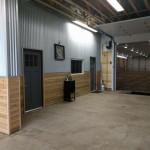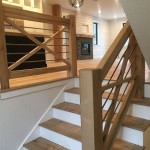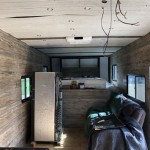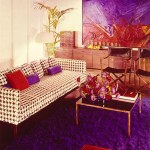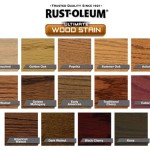Bar Interior Design Ideas: A Visual Guide to Inspiring Spaces
The design of a bar is paramount to its success. It not only establishes the ambiance and sets the tone for the patron's experience, but also significantly impacts operational efficiency and overall profitability. A well-designed bar encourages guests to stay longer, return more frequently, and ultimately contribute to a thriving business. This article explores various bar interior design ideas, offering a visual source of inspiration and providing valuable insights into the elements that contribute to effective and compelling bar spaces.
The following sections delve into different design considerations, offering practical advice and visual examples to spark creativity. From selecting the right materials and furniture to implementing effective lighting schemes and layout strategies, this guide provides a comprehensive overview of the key components that contribute to a successful bar interior design.
Defining Your Bar's Identity and Target Audience
Before embarking on any design project, it is crucial to define the bar's identity and understand its target audience. This foundational step dictates the overall aesthetic and informs every design decision. Is the bar intended to be a sophisticated cocktail lounge, a lively sports bar, a cozy neighborhood pub, or a trendy craft beer haven? The answer to this question will significantly influence the choice of colors, materials, furniture, and overall atmosphere.
Consider the demographics and preferences of the intended clientele. A bar targeting young professionals might favor sleek, modern designs with vibrant colors and interactive elements, while a bar catering to an older, more discerning audience might opt for classic, elegant aesthetics with comfortable seating and a relaxed ambiance. By clearly defining the target audience, designers can create a space that resonates with their patrons and fosters a sense of belonging.
The bar's location also plays a crucial role in shaping its identity. A seaside bar might incorporate nautical themes and natural materials, while a bar in a bustling urban center might embrace an industrial-chic aesthetic with exposed brick and metal accents. The design should complement the surrounding environment and reflect the character of the neighborhood.
Careful consideration should be given to the bar's name and branding. The interior design should reinforce the brand identity and create a cohesive visual experience. Consistent use of colors, fonts, and logos across all design elements helps to establish a strong brand presence and enhance recognition.
Ultimately, defining the bar's identity and understanding the target audience is a critical step in creating a successful and sustainable business. By aligning the design with the brand and the clientele, designers can create a space that is both visually appealing and commercially viable.
Material Selection and Surface Treatments
The choice of materials and surface treatments has a profound impact on the overall look and feel of a bar. Different materials evoke different emotions and contribute to the desired atmosphere. Consider durability, maintenance, and acoustics when selecting materials for floors, walls, countertops, and furniture.
For flooring, options range from classic hardwood and tile to modern concrete and epoxy. Hardwood floors offer warmth and elegance, while tile provides durability and water resistance. Concrete floors can be polished and stained to create a contemporary industrial look. Epoxy floors are seamless, durable, and easy to clean, making them a popular choice for high-traffic areas.
Wall treatments can range from paint and wallpaper to wood paneling and exposed brick. Paint offers a versatile and cost-effective way to add color and texture to walls. Wallpaper can add patterns and visual interest, but it may require more maintenance. Wood paneling provides warmth and sophistication, while exposed brick creates a rustic, industrial vibe. Consider using textured wall finishes to add depth and dimension to the space.
Countertops are a focal point in any bar, and the material choice should reflect the overall design aesthetic. Granite and marble are classic choices that offer durability and elegance. Quartz countertops are a more budget-friendly option that mimics the look of natural stone. Wood countertops provide warmth and character, but they require regular sealing to prevent water damage. Stainless steel countertops are hygienic and easy to clean, making them a popular choice for busy bars.
Furniture selection is another crucial aspect of material selection. Choose durable and comfortable furniture that complements the overall design. Upholstered chairs and booths provide comfortable seating for guests, while bar stools offer a casual and social atmosphere. Consider using a mix of materials, such as leather, wood, and metal, to add visual interest and create a layered look.
Acoustic considerations are also important when selecting materials. Hard surfaces can reflect sound and create a noisy environment. Incorporate sound-absorbing materials, such as acoustic panels, fabric wall coverings, and soft furnishings, to reduce noise levels and create a more comfortable atmosphere.
By carefully considering the properties of different materials and how they interact with each other, designers can create a bar interior that is both visually appealing and functionally sound.
Lighting Design and Atmosphere Creation
Lighting is a critical element in bar interior design, significantly influencing the atmosphere and the overall experience. A well-designed lighting scheme can create a welcoming and inviting ambiance, highlight architectural features, and enhance the visual appeal of the space. Different types of lighting, including ambient, task, and accent lighting, should be strategically combined to achieve the desired effect.
Ambient lighting provides overall illumination and sets the mood of the bar. Dimmable overhead lights, such as chandeliers, pendant lights, and recessed lighting, can be used to control the brightness and create a range of atmospheres. Warm lighting creates a cozy and intimate feel, while cooler lighting provides a more energetic and vibrant atmosphere.
Task lighting is essential for functional areas, such as the bar counter and seating areas. Under-cabinet lighting illuminates the bar counter and provides visibility for bartenders. Table lamps and sconces offer focused light for reading and socializing. Adjustable task lighting allows guests to customize the light levels to their preferences.
Accent lighting highlights specific features and adds visual interest to the space. Spotlights can be used to showcase artwork, architectural details, or product displays. Backlighting can create a dramatic effect and highlight textures. Color-changing LED lighting can add a dynamic and playful element to the design.
Consider using a layered lighting approach, combining different types of lighting to create depth and dimension. Experiment with different light sources, such as natural light, incandescent bulbs, LED lights, and neon signs, to create a unique and visually appealing atmosphere. Dimmers allow for adjusting the light levels throughout the day, creating different moods for different occasions.
The color temperature of the light also plays a crucial role in shaping the atmosphere. Warm light (2700K-3000K) creates a cozy and inviting atmosphere, while cool light (4000K-5000K) provides a more energetic and vibrant feel. Consider using a mix of warm and cool lighting to create a balanced and layered lighting scheme.
Control systems, such as smart lighting systems, allow for automating and controlling the lighting throughout the bar. These systems can be programmed to adjust the light levels based on the time of day, the occupancy of the space, or specific events. Smart lighting systems can also improve energy efficiency and reduce operating costs.
A well-designed lighting scheme can transform a bar from a functional space into a memorable and inviting destination. By carefully considering the different types of lighting, the color temperature, and the control systems, designers can create an atmosphere that enhances the overall experience and encourages guests to linger longer.
In addition to these key points, further considerations for bar interior design include spatial planning, designing for accessibility, incorporating technology, and complying with relevant building codes and regulations. These aspects all contribute to the creation of a functional, aesthetically pleasing, and successful bar environment.

Bar Renovation Ideas Images Free On Freepik

Bar Decoration Ideas Psd High Quality Free Templates For Freepik

Bar Free Design 3d Lighting Floor Plans By Planner 5d

Page 2 Bar Interior Decoration Ideas Images Free On Freepik

34 Diy Home Bar Ideas And Designs With Free Plans

Seats Around Bar Counter Free Stock Photo

Modern Restaurant Inspirations And Ideas

How To Turn Restaurant Design Into Your Greatest Advantage Portable Partitions

5935 Free Sketchup Bar Interior Model By Kts Nghia Than Models For

Free Stylish Bar Interior Image At Stockcake
Related Posts

